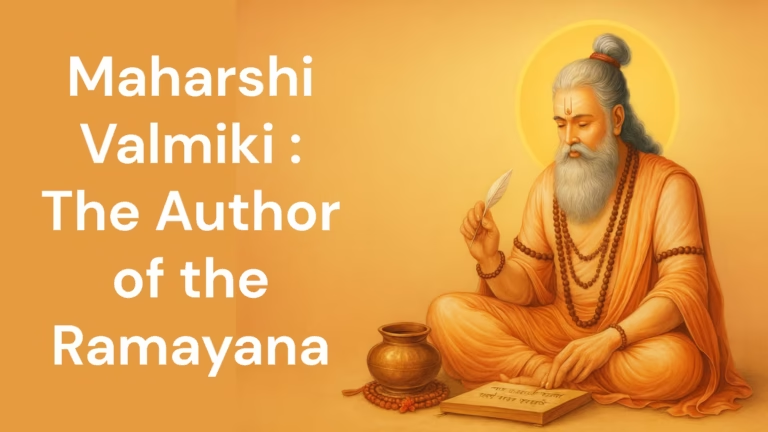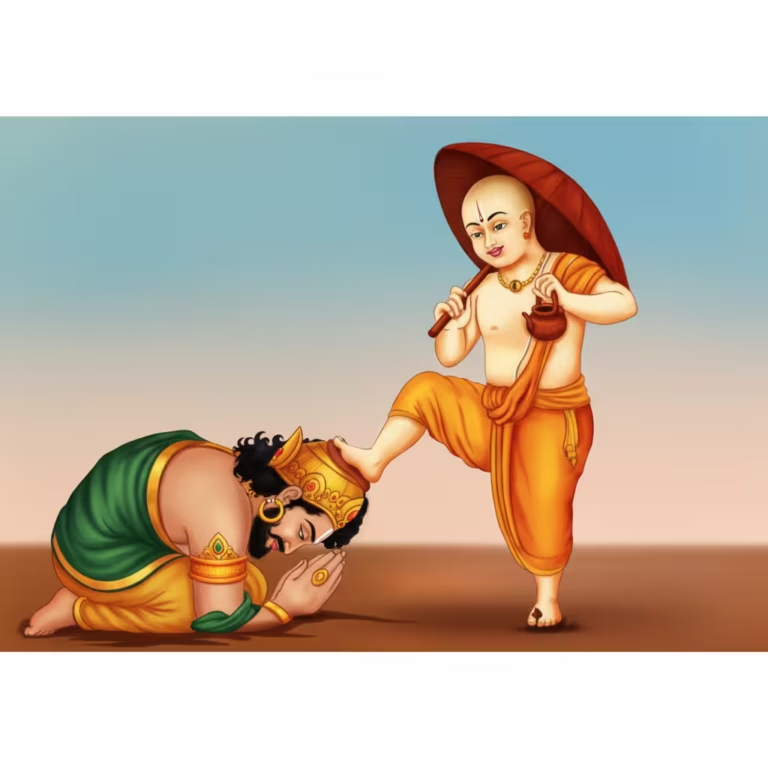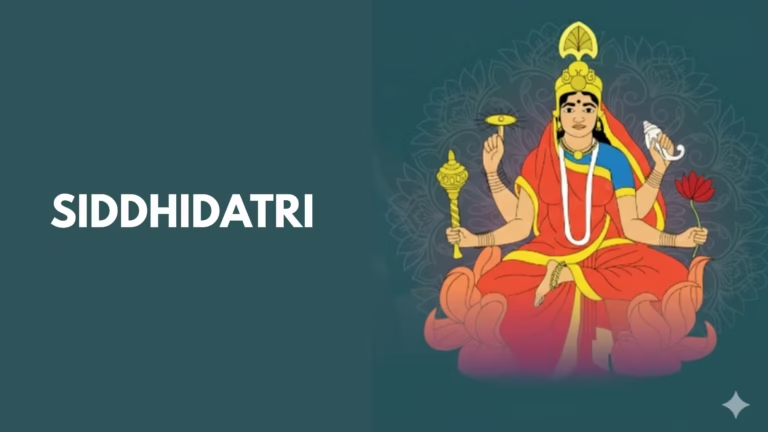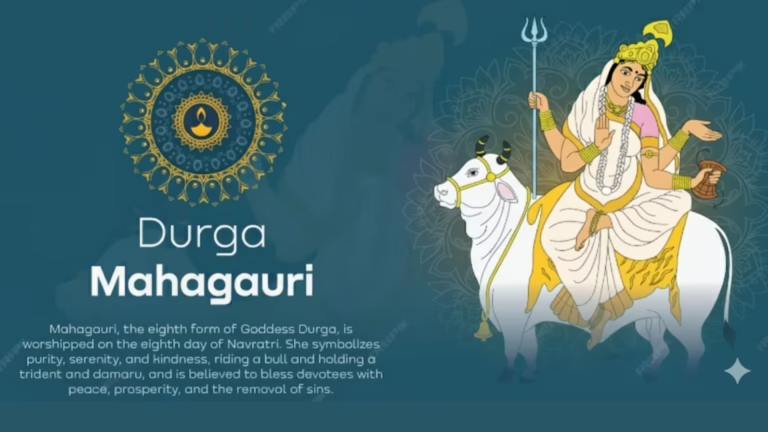Skandamata—worshiped as the fifth aspect in the Navadurga sequence—is revered as the archetype of sanctifying motherhood, righteous guardianship, and courageous empowerment within Śākta theology. The name joins Skanda (Kārttikeya/Kumāra/Ṣaṇmukha/Mahāsena/Subrahmaṇya)—the commander of the gods—with Mātā, the mother: “the Mother of Skanda.” In the Purāṇic imagination, the primordial Ādiśakti manifests many forms to accomplish the divine work of protecting dharma; among these, Skandamata embodies a maternal force that both nurtures and fortifies valor, instilling discipline and dharma‑steadfastness.
Name, Etymology, and Synonyms
- Skandamata literally means the Mother of Skanda.
- Purāṇic and classical literature enumerate Skanda’s several epithets—Kumāra, Kārttikeya, Ṣaṇmukha, Guha, Mahāsena, Subrahmaṇya—hence Skandamata denotes Pārvatī/Umā in her maternal, protective, and duty‑orienting form at the heart of Skanda’s mission.
- The name signals the heroic dimension of motherhood—care that disciplines, love that equips for righteous action, and nurture that orients the child toward dharma.
Primary Scriptural Setting (Purāṇic Sources)
The Skandamata principle rests upon the broad Purāṇic stream that narrates the birth, rearing, and consecration of Skanda as the gods’ commander:
- Devī‑Māhātmya (tradition within the Mārkaṇḍeya Purāṇa) and Devī‑Bhāgavata Purāṇa: frame the theology of the Goddess as the multi‑manifest cosmic power who upholds dharma and protects beings.
- Śiva Purāṇa and Skanda Purāṇa: elaborate Skanda’s manifestation, fosterage, and consecration as Mahāsena; the Tārakāsura‑vadha episode anchors his mission of restoring order.
Note: Details of Skanda’s birth slightly vary across branches— involving Agni, Gaṅgā, and the Kṛttikās—yet Śākta and Śaiva traditions firmly receive Pārvatī/Umā as Skanda’s mother; thus the devotional form Skandamata crystallizes the maternal essence of these narratives.
Theological Position within Navadurga
In the Navadurga path of practice, each form of the Goddess advances a distinct inner transformation. Skandamata marks the fusion of compassion and courage: maternal tenderness joined with the steadying of will, duty, and disciplined action. Her remembrance trains the devotee to protect and to persevere—without attachment to ostentation—thereby harmonizing household duty (gṛhastha‑dharma) with higher commitment to dharma.
The Birth and Mission of Skanda (Purāṇic Overview)
- Cosmic Intent: The gods seek relief from the oppression of Tārakāsura. The divine plan requires a valorous leader born of Śiva’s unsurpassed energy, harmonized by Śakti.
- Transmission of Energy: Narratives speak of Śiva’s blazing potency received and safeguarded—first by Agni, then Gaṅgā, and fostered by the Kṛttikā maidens—culminating in the appearance of Kumāra. These strands signify the safeguarding of divine power until its destined manifestation.
- Maternal Acceptance: Amid these variants, Pārvatī/Umā is acknowledged as the abiding mother—the heart of the Skandamata conception—by whose grace Skanda’s character is moulded toward righteous command.
- Consecration as Mahāsena: Anointed commander, Skanda leads the celestial forces, subdues Tārakāsura, and restores balance. The moral center here is maternal empowerment: the mother’s discipline, purity, and resolve channel a child’s innate brilliance toward dharma‑service.
Iconography and Contemplative Image (Dhyāna)
Traditional descriptions—poetic, liturgical, and iconographic—offer a composite image:
- Mother with Child: The infant Skanda seated upon the Mother’s lap or embraced at her bosom, emblem of nurture inseparable from purpose.
- Mudrās and Emblems: Commonly varada (boon‑bestowing) and abhaya (fear‑dispelling) mudrās; vessels like kalaśa/kuṇḍa/komandalu, rosary/flower, and at times a weapon—signifying the unity of protection and restraint with corrective force.
- Vāhana (Vehicle): The lion, symbol of fearlessness, royal resolve, and guardianship of dharma.
- Radiance: The shared aureole—Mother and Child illumined—signifying one resolve for divine work.
On variations: The number of arms and specific emblems vary across hymns, manuals, and regional traditions; the import lies in the functional symbolism (nurture, discipline, protection, rectitude), not in an invariant count.
Tārakāsura‑Vadha: Motherhood’s Brave Dimension
The Tārakāsura episode—central in Śiva and Skanda Purāṇic streams—presents Skanda as the divinely prepared leader who defeats the tyrant and re‑establishes order. Read through Skandamata’s lens, the episode declares that motherhood is not mere sheltering affection; it is the formation of courage and conscience. The son’s steadiness, restraint, and strategic clarity reflect the mother’s interior tapas and disciplined nurture. Thus, Skandamata becomes a living doctrine: compassion that strengthens, love that readies for responsibility.
Worship and Discipline (Ārādhana and Maryādā)
Purāṇa‑rooted practice emphasizes mantra, dhyāna, stotra‑recitation, and purity of conduct; the form is simple, the interior resolve unyielding:
- Purity and Resolve: Truthfulness, sattvic diet, restraint in speech and habit; devotion aligned to one’s duties.
- Scriptural Recitation: Devī‑Māhātmya readings (Durga‑Saptashatī lineages), selected hymns of the Goddess, and Skanda/Kumāra stotras—always as directed by a competent teacher (guru‑paramparā).
- Mantra‑Practice: Beej‑mantras and longer invocations occur in both Śākta and Śaiva lines. Their counts, nyāsas, and observances should be learned within proper dīkṣā and never improvised.
- Ritual Frame: Invocation, offering, lamp‑worship, peace‑prayer. Outward acts have meaning only when matched by inward integrity and non‑injury.
Purāṇic insistence: Inner rectitude is the soul of worship; display without discipline is barren.
Fruits of Practice (Sādhana‑Phala)
When remembrance of Skandamata ripens through steady practice, the tradition speaks of experiential fruits:
- Fearlessness and Fortitude: Dissolution of hesitation; emergence of calm bravery in duty.
- Discernment and Self‑restraint: Dharma‑aligned judgment amid difficulty; governance of impulse.
- Karmic Energy: Diminution of inertia; constancy in effort and time‑sense.
- Nurturing Governance: An enlarged maternal ethic—care with justice—in family, vocation, and society.
These endure when practice remains regular, teacher‑guided, and scripture‑consonant.
Navadurga Method and Skandamata’s Place
Navadurga—the nine worship‑worthy dimensions of Śakti—lead the sādhaka step by step toward purification (śuddhi), austerity (tapas), valor (śaurya), awareness of creation’s order (sṛṣṭi‑bodha), maternal compassion, courageous strength (vīrya‑sambala), illumination of knowledge (jñāna‑prakāśa), integration of attainments (siddhi‑samanvaya), and wholeness (sampūrṇatā). Within this sequence, Skandamata’s worship‑form is the confluence of maternal compassion and courageous strength—where the practitioner receives, along with protection, the courage and steadiness to fulfill duty.
Keep in mind that the day‑by‑day arrangement of Navadurga is systematized in the ācārya‑paramparā (teacher lineages); yet the foundational truth of the Goddess principle is that all forms are functional expressions of the one Supreme Śakti.
Skandamata and Household Dharma (Gṛhastha‑Dharma)
Purāṇas uphold household duty as a spine of social order. Skandamata instructs householders at three tiers:
- Care with Discipline: Affection that educates; love that corrects; parenting under truth and vow.
- Imprinting Courage: Training children in self‑command, effort, and justice—seed of service to the common good.
- Social Beneficence: Let domestic spirituality flower as community service, charity, and non‑injury.
In this light, Skandamata refutes the false dichotomy between tenderness and strength: true motherhood is wise compassion partnered with firm duty.
What the Tradition Discourages (Do‑Nots)
- Unsanctioned Esoterica: Avoid uninitiated experiments with occult mantras or rites; seek teacherly guidance.
- Ostentation: Prefer purity, truth, and mercy over pageantry.
- Unfounded Claims: Do not assert what lacks clear scriptural ground; first consult the texts and competent teachers.
Frequently Asked Questions (FAQ)
Q1. Is “Skandamata” explicitly named in the Purāṇas?
The maternal essence and fosterage of Skanda are copiously narrated in Śiva and Skanda Purāṇas (and celebrated in Śākta scripture). The Navadurga devotional arrangement systematizes this maternal facet as Skandamata, integrating the Purāṇic mother‑principle into regular worship.
Q2. Why do some accounts mention multiple foster‑figures?
Different Purāṇic lines remember the roles of Agni, Gaṅgā, and the Kṛttikās in safeguarding and nurturing the fiery seed before Kumāra’s manifestation. Yet Śākta reception centers Pārvatī/Umā as the mother, which is the basis of Skandamata devotion.
Q3. Are the arms and emblems of Skandamata fixed?
Counts vary across hymns and manuals. The intention is symbolic: the balance of nurture, guidance, protection, and corrective power.
Q4. Are color‑codes, specific edibles, or rigid day‑orders mandated by Purāṇas?
Purāṇas chiefly expound principle, ethic, and discipline. Many detailed observances are later customary lines; priority remains on scriptural recitation, mantra‑practice under guidance, and purity of conduct.
Meditative Reflection (Practical Dhyāna‑Note)
Contemplate the Mother seated upon the lion, child Skanda upon her lap; hold the sense that compassion does not shield from duty but steadies one for it. Inhale the quiet of fearlessness, exhale hesitation. Let affection mature into responsibility; let discipline be warm, not harsh. This is Skandamata’s pedagogy for the heart.
Teaching Message (Śikṣopayogī Saṃdeśa)
Skandamata’s enduring counsel is the concord of tenderness and heroism. Protection is not indulgence; nurture does not coddle vice. True care trains, appoints, and releases for service. In study, livelihood, and public life, this balanced ethos yields resilient individuals and a stable society.
Skandamata is the current of Śakti that ties motherly compassion to courageous resolve—joining the two poles of life. In her remembrance, one becomes fearless yet gentle, composed yet energetic, just yet kind; and through such persons, the world is quietly set right.



